
Roots
The quiet moments before sleep hold a unique power, a pause in the day’s rhythm where we attend to the tender care of our being. For those with textured hair, this evening pause often extends to a deliberate ritual ❉ the covering of strands. This practice, far from a mere habit, reaches into the very architecture of each curl, coil, and wave, safeguarding its delicate structure against the unseen forces of the night. It is a gesture born from an understanding of hair’s intrinsic vulnerability, a silent agreement with oneself to honor and preserve what the day’s demands might otherwise diminish.

The Hair’s Outer Shield How Does Friction Affect It?
Beneath the visible cascade of curls lies a complex microscopic world. Each individual hair strand possesses an outer layer, known as the Cuticle. Picture this cuticle as a series of overlapping scales, much like shingles on a roof. In healthy, well-maintained hair, these scales lie flat, creating a smooth surface that reflects light and provides a protective barrier for the inner cortex.
When these scales are disturbed, they lift, leading to increased friction, moisture loss, and ultimately, breakage. This is particularly true for textured hair, where the natural bends and curves of the strand mean that these cuticle scales are inherently more prone to lifting and disruption. Source notes that in very curly locks, hair-shaft shingles can be packed so tightly they do not lie flat, allowing moisture to escape.
During sleep, our movements, even subtle shifts and turns, generate considerable friction between hair and bedding. Conventional pillowcases, often made from cotton, possess a surface that, while soft to the touch, can be surprisingly abrasive to hair. The microscopic fibers of cotton can snag and pull at the delicate cuticle layers, causing them to lift, fray, and eventually break. This constant rubbing can lead to tangles, frizz, and the unwelcome appearance of split ends.
Covering textured hair at night shields its delicate cuticle from abrasive forces, preventing damage and preserving its natural integrity.
The consequence of this nocturnal friction is not merely cosmetic. Over time, consistent damage to the cuticle compromises the hair’s overall health. The inner cortex, responsible for the hair’s strength and elasticity, becomes exposed and vulnerable to environmental stressors and further dehydration. This can result in hair that feels rough, appears dull, and lacks its characteristic spring and vitality.
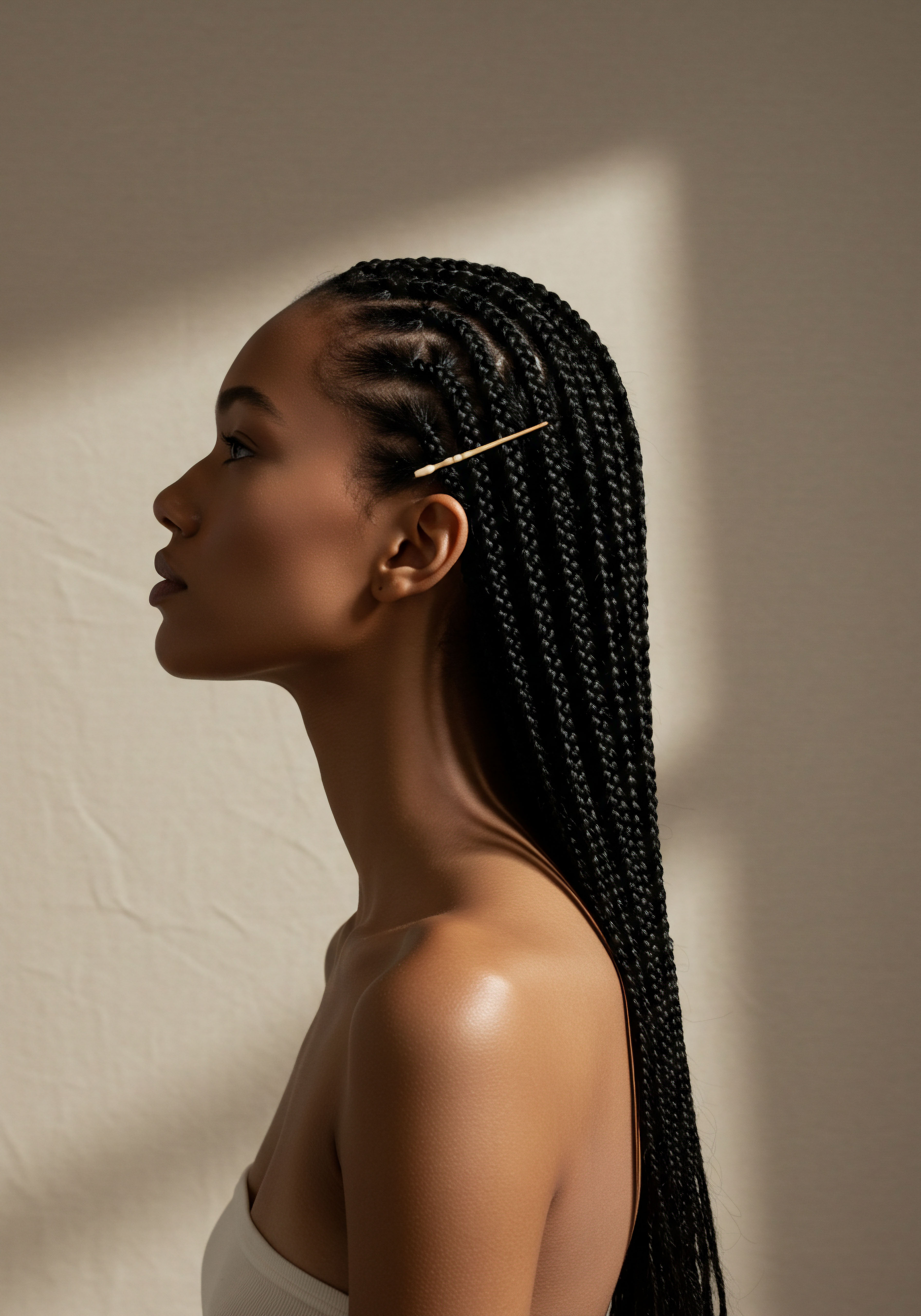
Why Do Textured Strands Require Special Attention?
Textured hair, with its inherent bends, twists, and varied curl patterns, possesses a unique architecture that makes it more susceptible to certain types of damage compared to straight hair. The very nature of its coils means that natural oils produced by the scalp, known as Sebum, have a more challenging journey traveling down the hair shaft. This can leave the ends of textured strands naturally drier. Furthermore, the points where the hair bends are structural weak spots, more prone to breakage when subjected to external stress like friction.
Consider the sheer number of contact points a single strand of coily hair has with a pillowcase compared to a straight strand. Each curve, each bend, presents another opportunity for friction to occur, amplifying the potential for cuticle disruption and subsequent damage. This intrinsic susceptibility underscores the importance of a thoughtful nighttime routine, a practice that moves beyond simple protection to active preservation.
- Cuticle Integrity ❉ The outermost layer of hair, the cuticle, is a series of overlapping scales. Friction from rough fabrics can lift these scales, leading to damage.
- Moisture Balance ❉ Textured hair is often naturally drier because scalp oils struggle to travel down the coiled strands, making moisture retention critical.
- Structural Vulnerability ❉ The bends in curly and coily hair are points of inherent weakness, making them more prone to breakage from external forces.

Ritual
Stepping into the realm of nighttime hair care for textured strands feels like entering a sanctuary, a space where conscious choices meet the quiet wisdom of self-preservation. This practice transcends simple habit; it becomes a deliberate act of nurturing, a practical expression of care that yields tangible benefits by morning light. It is about understanding the practical wisdom that informs the selection of materials and the gentle techniques that secure hair for its overnight rest.
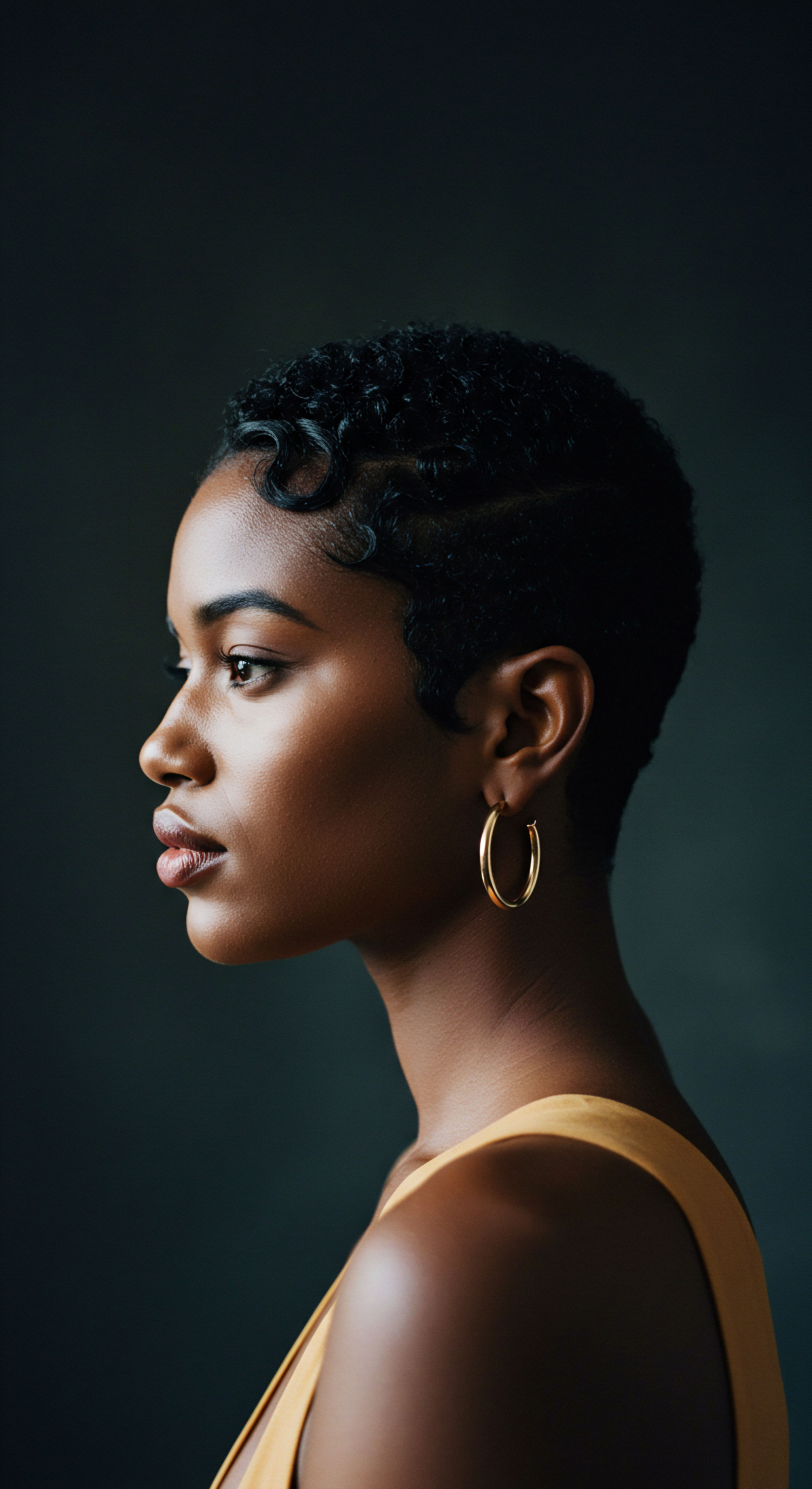
What Materials Offer the Best Nighttime Protection?
The choice of material for covering textured hair at night is a cornerstone of effective protection. The aim is to minimize friction and preserve the hair’s delicate moisture balance. Two materials stand out for their exceptional properties ❉ silk and satin.
Silk, a natural protein fiber, boasts an incredibly smooth surface. When hair glides across silk, the friction is dramatically reduced compared to coarser fabrics like cotton. This smoothness means less snagging, less pulling, and consequently, fewer lifted cuticles, less frizz, and reduced breakage.
Beyond its frictionless quality, silk is also less absorbent than cotton. This allows the hair to retain its natural oils and any applied moisturizers, preventing the dryness that often leads to brittleness and breakage.
Satin, while often confused with silk, refers to a weave, not a fiber. It can be made from various materials, including polyester, but its smooth, glossy surface mimics many of silk’s beneficial properties. Satin pillowcases and bonnets offer a more accessible alternative to silk, providing significant friction reduction and helping to maintain hair’s moisture. Dr.
Alicia Mendez, a trichologist at the Austin Hair Research Center, states that “Switching to silk or satin materials can reduce friction by up to 43% during sleep.” This quantifiable reduction underscores the profound impact material choice has on hair health. A client named Emma, who struggled with significant breakage, experienced remarkable improvement after just two weeks of using a satin cap, noting a dramatic reduction in morning frizz and improved moisture retention.
The table below offers a comparative look at common nighttime hair covering materials ❉
| Material Silk |
| Surface Texture Very smooth, soft |
| Moisture Absorption Low |
| Friction Level Very low |
| Material Satin |
| Surface Texture Smooth, glossy |
| Moisture Absorption Low to moderate |
| Friction Level Low |
| Material Cotton |
| Surface Texture Rough, fibrous |
| Moisture Absorption High |
| Friction Level High |
| Material Silk and satin offer superior protection against friction and moisture loss compared to cotton. |

What Protective Styles Complement Nighttime Covering?
Beyond the material itself, the way hair is prepared for sleep plays a significant role in its protection. Pairing a hair covering with a gentle protective style further minimizes tangling, preserves curl patterns, and reduces stress on the hair strands.
Loose braids, such as a single large braid or two pigtail braids, can keep hair contained without causing tension at the scalp. This prevents hair from rubbing against itself or the pillowcase, reducing friction-induced damage. Similarly, a loose bun placed high on the head, often called a “pineapple,” keeps curls lifted and away from the nape of the neck, where friction is most common. For shorter styles or those with very tight coils, simply gathering the hair gently into a satin bonnet or scarf can be sufficient.
Protective styling, combined with appropriate hair coverings, forms a powerful defense against nocturnal damage, preserving hair’s structure and hydration.
It is important to avoid styles that create excessive tension on the scalp, such as very tight ponytails or buns, as these can lead to breakage or even traction alopecia over time. The goal is comfort and protection, allowing the hair to rest undisturbed throughout the night.

How Does Covering Hair Preserve Style and Reduce Morning Effort?
One of the most immediate and appreciated benefits of covering textured hair at night is the preservation of hairstyles. For those who spend considerable time defining curls, setting twists, or perfecting braids, a night of unprotected sleep can undo all that effort, resulting in “bed head” characterized by frizz, flattened curls, and tangles.
A silk or satin covering acts as a barrier, shielding the hair from the disheveling effects of tossing and turning. It maintains the integrity of the curl pattern, reduces frizz by preventing moisture from escaping or excessive humidity from entering the hair shaft, and minimizes tangling. This means waking up to hair that is largely intact, requiring minimal restyling.
This not only saves time in the morning but also reduces the need for excessive manipulation, which can further contribute to hair damage. It transforms the morning routine from a battle against disarray to a gentle refresh.

Relay
Beyond the tangible benefits of reduced friction and preserved moisture, the practice of covering textured hair at night resonates with deeper currents of cultural heritage, personal identity, and a quiet, profound act of self-care. It is a dialogue between the practical demands of hair health and the rich, often unspoken, narratives that have shaped the experiences of individuals with textured hair across generations. This section will delve into the interconnected biological, social, and cultural threads that explain this widespread and deeply personal practice.

What Cultural Significance Does Nighttime Hair Care Hold?
For many, particularly within Black communities, the act of covering hair at night is not merely a modern hair care tip; it is a continuation of practices passed down through generations, holding a significant cultural weight. Historically, hair in African cultures has been a potent symbol of identity, status, spirituality, and community. Intricate hairstyles could communicate tribal affiliation, marital status, age, or even a person’s social standing. The care of hair was often a communal activity, a time for bonding and sharing stories.
During periods of enslavement, the forced shaving of heads symbolized the stripping away of identity and culture. Yet, even in adversity, individuals found ways to reclaim agency through their hair, sometimes braiding maps for escape or concealing seeds within their styles. Head coverings, including those worn at night, evolved to serve multiple purposes ❉ protection from harsh conditions, a means of modesty, and a quiet assertion of self in a world that sought to deny it.
Source notes that for many Black women, a hair wrap honors childhood traditions and affirms their need for self-care. Nancy Redd’s “Bedtime Bonnet” beautifully illustrates this routine, a shared experience for many of African descent.
Nighttime hair covering extends beyond mere protection; it embodies cultural continuity, personal identity, and a deep tradition of self-care for textured hair.
The silk bonnet or satin scarf worn today carries echoes of these historical practices, transforming a practical necessity into a ritual of continuity and cultural pride. It is a subtle yet powerful affirmation of heritage, a link to ancestral wisdom that recognized the importance of safeguarding hair.
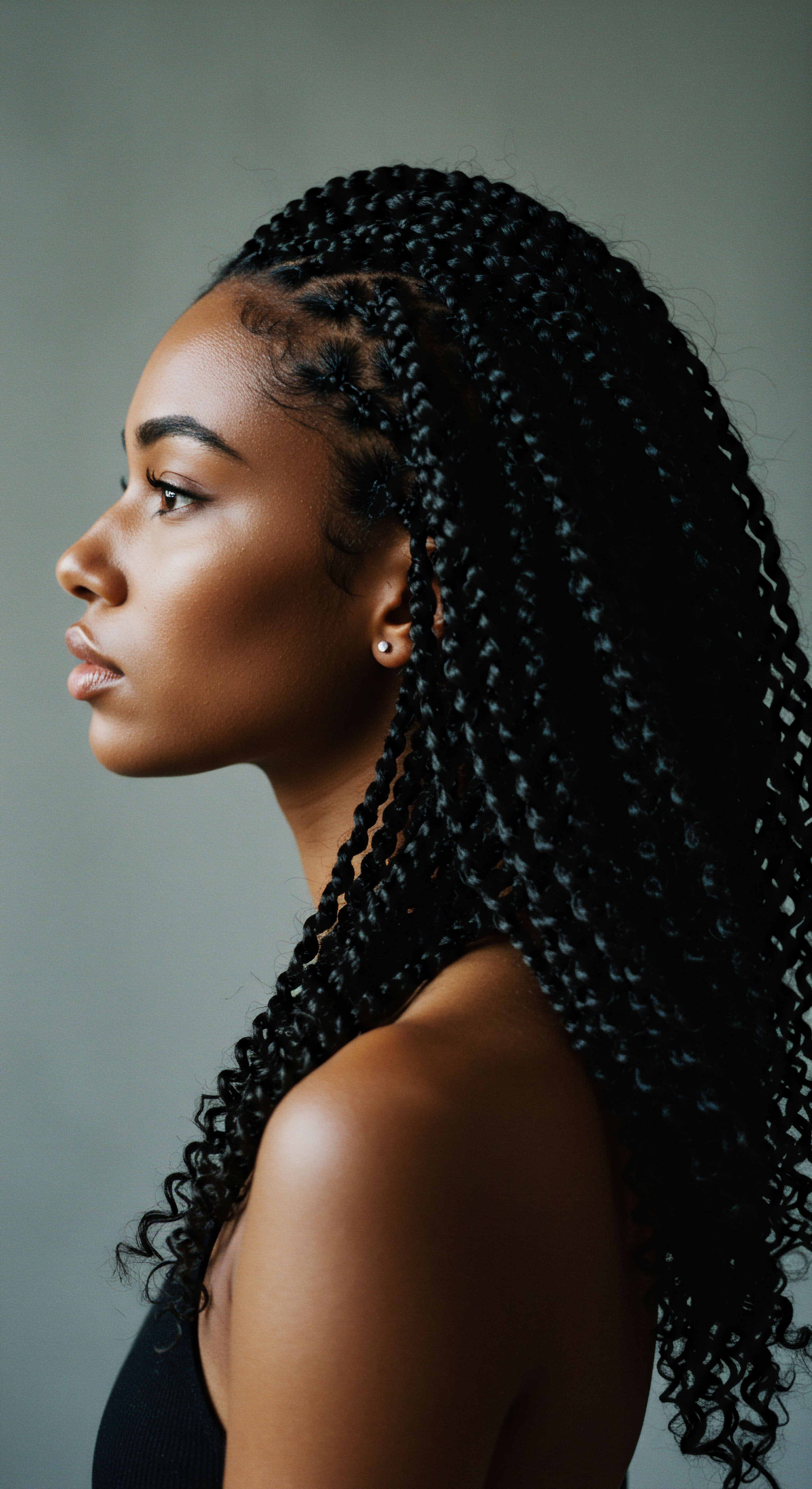
How Does Environmental Humidity Impact Textured Hair?
Beyond physical friction, the invisible forces of the environment, particularly humidity, play a critical role in the behavior of textured hair, especially overnight. Hair, being hygroscopic, readily absorbs moisture from the air. For textured hair, this interaction with humidity can lead to significant changes in its structure and appearance.
When humidity is high, the hair’s cuticle, which we previously likened to roof shingles, absorbs moisture and swells. This swelling causes the cuticle scales to lift further, allowing even more moisture to enter the hair shaft. While some moisture is beneficial, an excess leads to the phenomenon known as Frizz.
The hair expands unevenly, losing its defined curl pattern and appearing puffy or unruly. This effect is particularly pronounced in textured hair due to its already open cuticle structure and inherent dryness.
Conversely, in very dry environments, hair can lose moisture to the air, leading to dehydration and increased brittleness. A hair covering acts as a micro-environment, a localized humidity regulator around the hair. It helps to seal in moisture in dry conditions, preventing excessive evaporation.
In humid conditions, it can offer a degree of protection against the rapid absorption of external moisture, helping to maintain style and reduce frizz. The covering provides a stable climate for the hair, minimizing the disruptive effects of fluctuating atmospheric moisture.
Research on hair frizz indicates that an imbalance in hair’s moisture level is a primary cause. Studies also suggest that factors such as time, temperature, and relative humidity are crucial for hair’s tendency to frizz. Covering the hair helps to create a more consistent moisture environment, reducing these external influences.
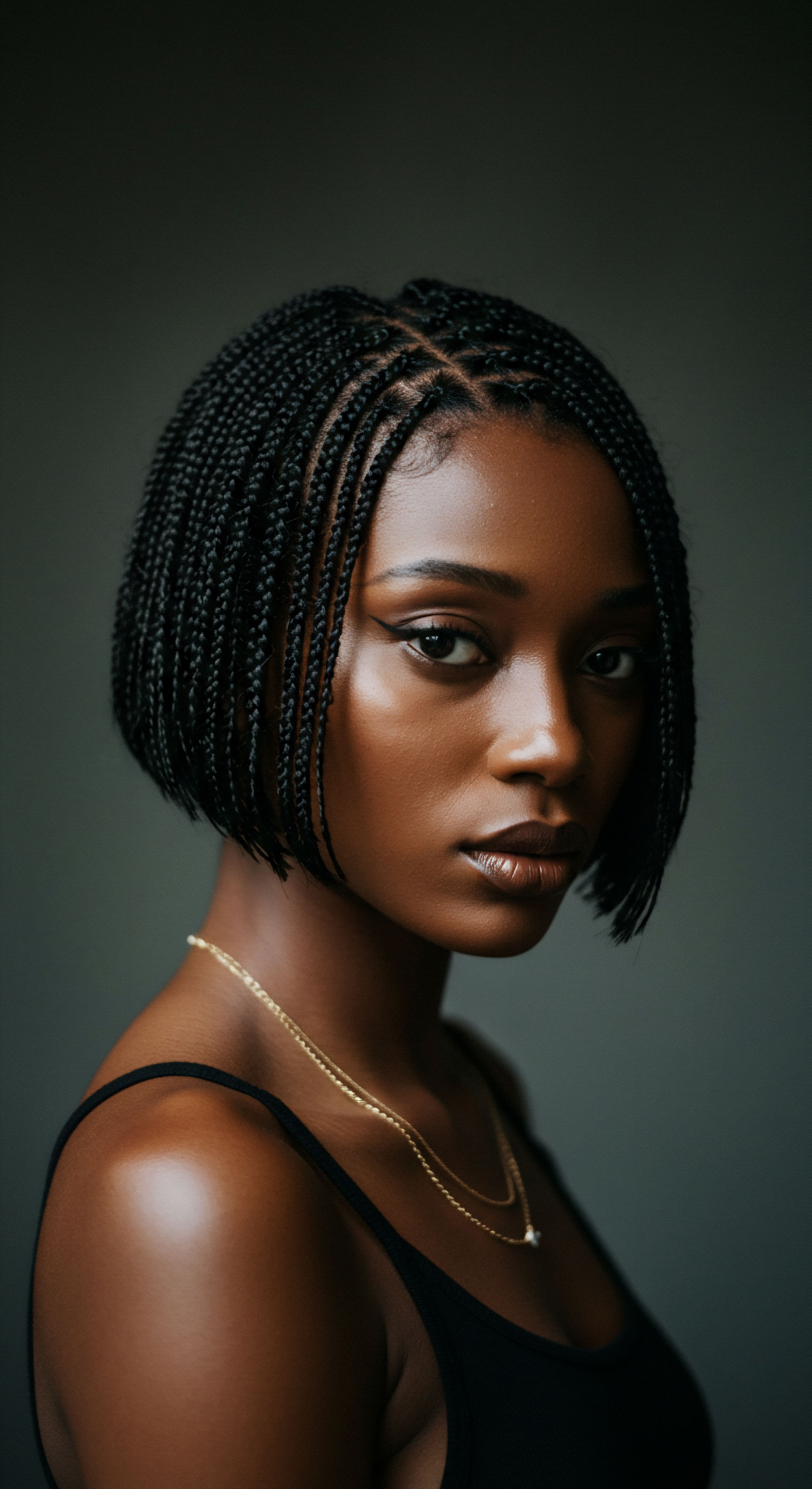
Why Is Preserving Moisture a Critical Nighttime Objective?
The inherent structure of textured hair, with its unique coil patterns, often means that natural scalp oils struggle to travel down the entire length of the strand. This characteristic makes textured hair more prone to dryness compared to straight hair. Moisture, therefore, becomes a cornerstone of its health and vitality.
During the hours of sleep, without proper protection, hair can lose a significant amount of its moisture to absorbent pillowcases, particularly those made of cotton. Cotton, being a highly absorbent fiber, can wick away essential hydration and any applied products, leaving hair dry, brittle, and susceptible to breakage. This loss of moisture compromises the hair’s elasticity, making it less resilient and more prone to damage from styling or manipulation.
By covering textured hair with silk or satin, a protective barrier is established. These materials are less absorbent, allowing the hair to retain its natural oils and the benefits of leave-in conditioners or moisturizing treatments applied before bed. This continuous hydration throughout the night helps to keep the cuticle smooth, the hair shaft pliable, and the curls defined.
It is a proactive step in maintaining the hair’s lipid barrier, a vital component for healthy, vibrant textured strands. This preservation of moisture is not merely about softness; it is about maintaining the structural integrity and long-term resilience of the hair.
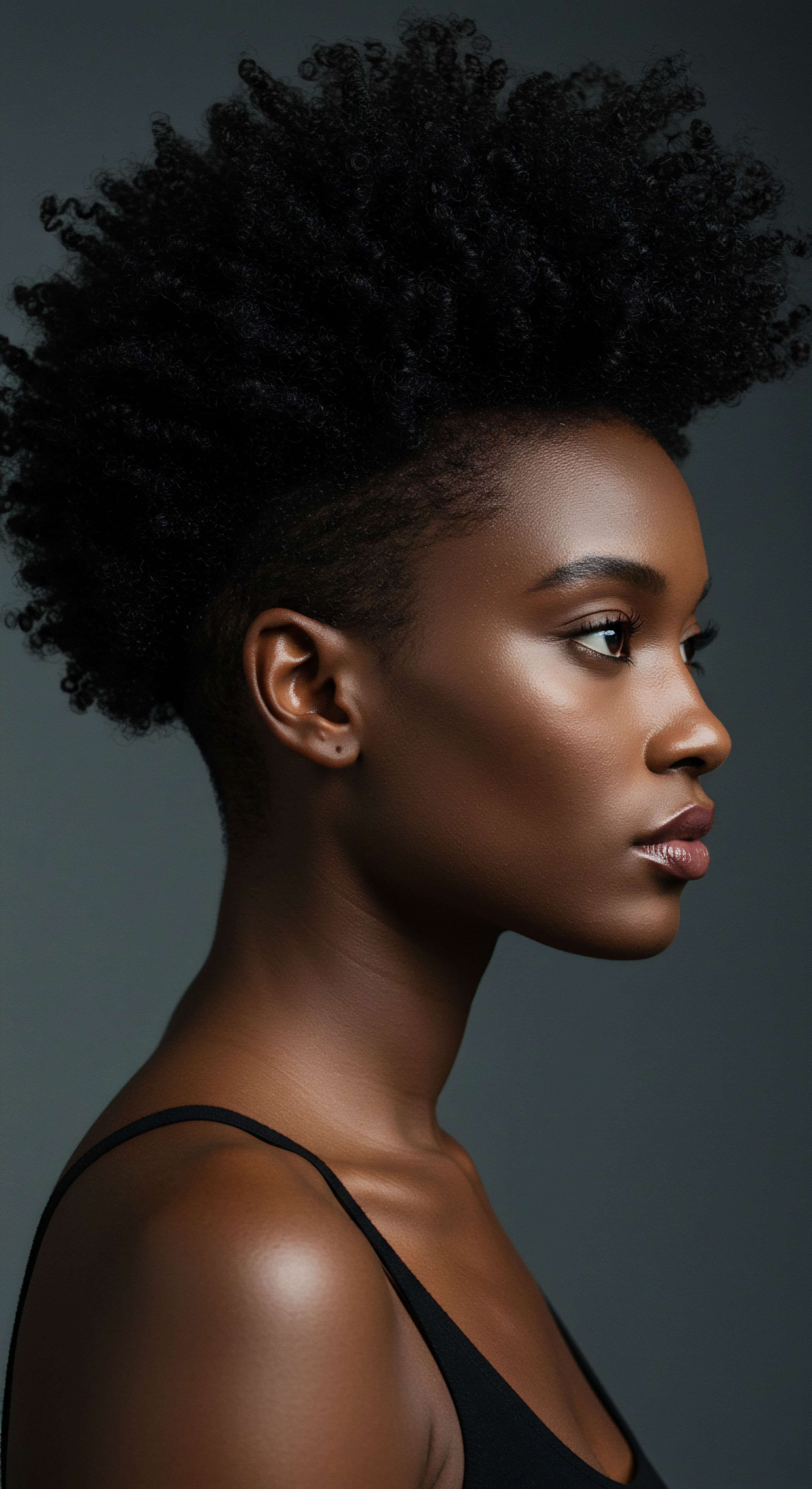
Reflection
The journey through the reasons behind covering textured hair at night reveals a rich tapestry woven from scientific understanding, cultural memory, and the tender practice of self-care. It is a daily reaffirmation of hair’s intrinsic beauty and its profound connection to identity. Each carefully chosen bonnet or scarf, each gentle twist of a braid, is a quiet testament to the enduring wisdom of preserving what is precious, allowing textured strands to rest, rejuvenate, and rise with renewed vitality, ready to greet the day.

References
- Sleep.com. (2021, September 3). How a Hair Wrap Routine Protects More Than Just My Hair.
- The Clifford Clinic. (2024, March 28). Unraveling The Myth ❉ Can Silk Pillows Prevent Hair Loss?
- Right Element. The Role Of Pillowcases In Hair Health.
- Paul’s teaching about Headcoverings (1 Cor 11:2-16).
- Little Extra. (2023, January 25). How to Prevent Split Ends While Sleeping.
- Slipssy. (2025, April 16). Slipssy’s First-Night Effect ❉ How Reducing Friction Transforms Your Hair Overnight.
- Stylist. All About Afro ❉ unravelling the culture behind African hair braiding.
- University of Houston Libraries. (2022, April 20). The Politics of Black Hair ❉ Using Children’s and Young Adult Literature to Teach and Affirm Black Identity.
- Sleep Foundation. (2023, March 16). Benefits of a Silk Pillowcase.
- Wallin, A. (2018). All-day hair manageability for textured hair types – A revision of the current anti-frizz technologies and suggestions for the future. KTH Royal Institute of Technology.
- Science News Explores. (2024, November 14). Science works to demystify hair and help it behave.
- Controlled Chaos. (2024, October 17). What Does Humidity Do to Curly Hair?
- Clinikally. (2024, July 16). Impact of Sleep Deprivation on Hair Health.
- Austin Hair Research Center. (2025, May 15). I stopped using cotton pillowcases and reduced hair breakage by 43% (what my hairstylist noticed after 2 weeks).
- Dias, M. F. R. G. (2015). Human Hair and the Impact of Cosmetic Procedures ❉ A Review on Cleansing and Shape-Modulating Cosmetics. MDPI.
- Library of Congress. Heavy is the Head ❉ Evolution of African Hair in America from the 17th c. to the 20th c.
- Reddit. (2023, May 4). Can hair acclimatize to humidity levels? Does it cause permanent damage?
- Yeshivat Har Etzion. Head-Covering IV ❉ How.
- Medical News Today. (2024, July 10). Frizzy hair ❉ Causes, treating, prevention, and more.
- Carmesi. (2022, April 28). Uncovering the Benefits and Myths of Using Silk Pillowcases for Hair Health.
- University of the Witwatersrand, Johannesburg. Narratives of Black Women on Hair in the Workplace.
- JD Institute of Fashion Technology. (2021, June 23). HEADWRAPS ❉ HISTORY AND EVOLUTION.
- UMBC ❉ University Of Maryland, Baltimore County. (2023, August 11). Why Does Your Hair Curl In The Summer? A Chemist Explains The Science Behind Hair Structure.
- Citizens Advice – Bath & North East Somerset. (2021, October 8). Black History Month – Reclaiming the Afro.
- Center for South Asian and Middle Eastern Studies. Cross-Culture Head Coverings.